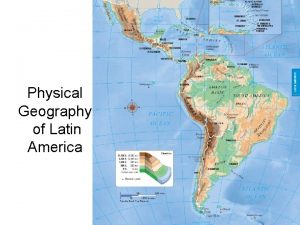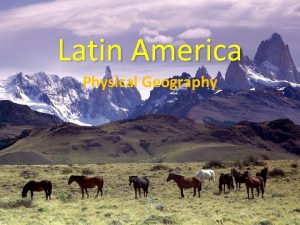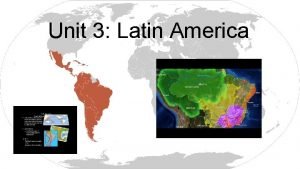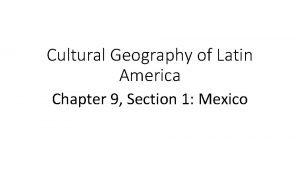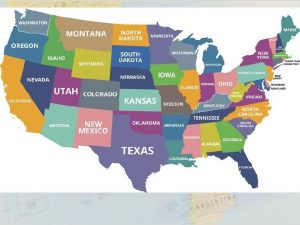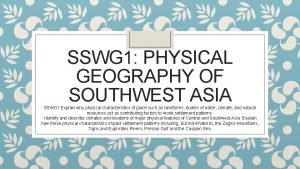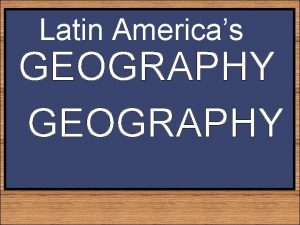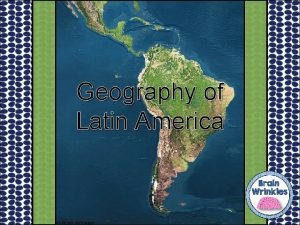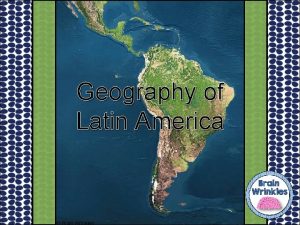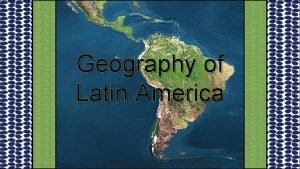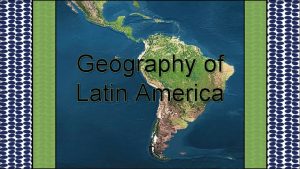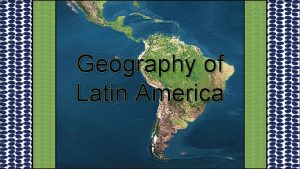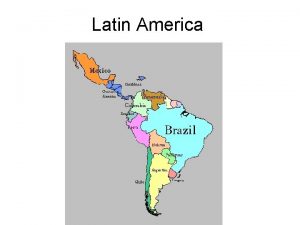Physical Geography of Latin America STANDARD SSWG 1















- Slides: 15

Physical Geography of Latin America

STANDARD SSWG 1. Explain why physical characteristics of place such as landforms, bodies of water, climate, and natural resources act as contributing factors to world settlement patterns.

Countries/Continents in Latin America: Mexico, Central America, South America, Caribbean

Why would we group Mexico in with Latin America if Mexico is part of the continent of North America?

Latin America • Spans from U. S. /Mexico border to Tierra del Fuego (Southernmost point of South America) – 7, 000 miles • Encompasses part of North America, all of South & Central America, & Caribbean Islands • Made up of highlands, lowlands, rainforests, plains • Bounded by Caribbean Sea, Gulf of Mexico, Atlantic & Pacific Ocean

Key Physical Features

Andes Mountains • Stretch entire length of South America • S. Tip of Chile to Columbia • Highest Peak = Aconcagua (23, 000 feet) • Isolates west coast of South America from rest of continent • South America’s highest mountains

Amazon Basin • 2. 7 million square miles (barely smaller than U. S. ) • Rivers, streams & creeks that flow into Amazon River • Brazil, parts of Columbia/Peru/Bolivia • Extremely biodiverse • Historical settlement = small populated communities • Chainsaws & bulldozers = modern human development

Atacama Desert • • Driest non-polar desert Rain may not fall for years Plateau west of Andes, East of Pacific Primarily in Chile

Pampas • Primarily in Argentina; also in Uruguay and Brazil • Vast plain dominated by grasslands & rich soil • 300, 000 square miles • Arid region to west, humid region (precipitation) to the east

• Two bordering oceans = Pacific & Atlantic • Mountain Chain running through Mexico = Sierra Madres • Where does the Amazon River empty? Atlantic Ocean • What two continents does Latin America span?


The Caribbean • Major Islands of Caribbean • The Bahamas • The Greater Antilles • The Lesser Antilles

Natural Resources of Latin America • 3 types • Mineral – Gold & Silver • Energy – Oil & Natural Gas • Agricultural – Timber • South America is among world leaders in mining of natural resources • What is the benefit of having natural resources?

How do natural resources & landforms contribute to climate & vegetation?
 Sswg
Sswg Why is called latin america
Why is called latin america Middle america
Middle america Pampas physical map
Pampas physical map Chapter 8: the physical geography of latin america answers
Chapter 8: the physical geography of latin america answers Amazon river
Amazon river Geography of latin america color by number
Geography of latin america color by number Chapter 9 cultural geography of latin america answers
Chapter 9 cultural geography of latin america answers Traje tipico de soloma
Traje tipico de soloma South america webquest
South america webquest Lesson 1 latin america africa and the middle east
Lesson 1 latin america africa and the middle east Physical features latin america
Physical features latin america Major physical features of latin america
Major physical features of latin america Plateau of mexico
Plateau of mexico Physical features of south america
Physical features of south america We can do a rap of the map of the us
We can do a rap of the map of the us


